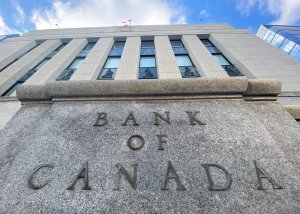February 21, 2024 | Inflation Dropped in Canada – So Why is the Cost of Living Unaffordable?

Statistics Canada reported that inflation slowed in January to 2.9%, beating expectations of 3.3%. So why are Canadians still struggling to afford basic necessities like rent and food?
Mortgage interest costs remain the top noted driver of inflation after rising 27.4% YoY, while rentals increased 7.9% during the same period. Bank of Canada governor Tiff Macklem explained that the central bank cannot fix the housing crisis through cuts. “Housing affordability is a significant problem in Canada but not one that can be fixed by raising or lowering interest rates,” he noted at the beginning of February. The Bank of Canada has voted to raise interest rates 10 times since March 2022, with little to no impact on inflation.
The central bank cannot manage supply and demand. Rentals.ca noted that rentals have been rising by C$373 per month since COVID restrictions and lockdowns decimated the global economy. Demand far outweighs supply, and Canada Mortgage and Housing Corp. noted that vacancies are at their lowest level since they began reviewing the data in 1988.
Trudeau’s government only cares about the rising debt-to-GDP ratio, and analysts cling to their failed theories of Keynesian economics. What percentage of interest costs are in that deficit, and what happens when they can no longer sell the debt? These are questions entirely overlooked.
The Canadian dollar is simply worth less than it was before the COVID lockdowns, and the Canadian dollar’s decline is contributing to the rising cost of imports.
The Bank of Canada has the same issue with its central bank as many other nations – the government will not stop spending. Total government spending for the 2023 fiscal year through the end of March 2024 is estimated to be C$488.7 billion.
Yet, the Trudeau Administration announced this week that they will be spending another C$300+ million on ammunition for Ukraine as Canada, like all other NATO nations, has been prioritizing spending on foreign wars while ignoring its growing deficit.
Canada’s deficit is expected to hit C$38.4 billion in 2024/25 and C$38.3 billion in 2025/26. Who is the largest buyer of Canadian debt? Foreign investors from the United States who purchased around $13.1 billion of Canadian debt securities. Canada saw a high in foreign share acquisitions in December 2023 to the tune of C$29.4 billion, with non-US foreign share investment reaching C$6.3 billion.
Investors are mainly seeking instruments denominated in USD that are issued by Canadian banks. Now, Canada must make investment opportunities more lucrative for the US buyer compared to domestic investments. Hence, the BoC is moving in line with the Federal Reserve, but both are utterly helpless as they cannot control fiscal policies.
STAY INFORMED! Receive our Weekly Recap of thought provoking articles, podcasts, and radio delivered to your inbox for FREE! Sign up here for the HoweStreet.com Weekly Recap.
Martin Armstrong February 21st, 2024
Posted In: Armstrong Economics













